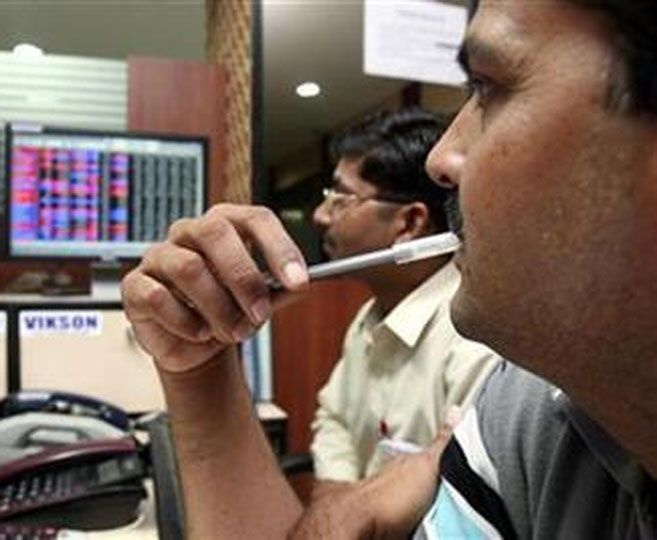The macroeconomic environment is looking better and likely to stay that way, notes Subir Gokarn.
 When the G20 finance ministers and central-bank heads met in South Korea in late 2010, the United States Federal Reserve had just initiated the second of what eventually turned out to be three rounds of quantitative easing.
When the G20 finance ministers and central-bank heads met in South Korea in late 2010, the United States Federal Reserve had just initiated the second of what eventually turned out to be three rounds of quantitative easing.
This provoked major concerns amongst emerging-market economies, with the spectre of "currency wars" - appreciation due to large, liquidity-driven capital inflows - being raised.
Currency dynamics apart, one concomitant of the easing was a steep increase in crude-oil prices, which hit oil importers like India quite hard.
Four years later, as the same group meets in Australia, the global macroeconomic situation looks distinctly different.
Admittedly, the turbulence of the summer of 2013 was triggered by the announcement that liquidity would be rolled back.
However, even as that process has been at work for the past several months, global markets have been behaving as though there is a permanent situation of easy liquidity.
Even as the United States Federal Reserve approaches the point at which it begins to raise interest rates, after more than six years at the zero level, markets seem remarkably buoyant.
Is the recurrent post-crisis turbulence now finally behind us?
Or is this yet another false dawn, with another adverse shock waiting to spring?

Looking at the situation from India's perspective, I think there are three factors that point to a relatively stable external economic environment in the months ahead.
First, there has been a significant softening in commodity prices - most notably oil.
Is it just a coincidence that this happened as the United States monetary-policy stance is returning to normal? I think not.
Four years ago, prices of oil surged because it and, to an extent, other commodities were seen as attractive asset classes to investors flush with liquidity.
Underlying demand conditions mattered relatively little.
As liquidity recedes, investors will obviously re-assess their portfolio choices; at their peak-price levels, commodities look less attractive than, say, equity or real estate, which are likely to be more responsive to a business-cycle upturn.

For India, the moderation in oil prices, if it sustains, will yield enormous dividends.
It will reinforce the significant narrowing of the current-account deficit, which implies a relatively stable outlook for the rupee.
It will greatly help the fiscal situation by reducing the subsidy bill.
Last week, the diesel under-recovery disappeared.
It will obviously help rein in inflation, creating room for the monetary-policy stance to reverse, which, in turn, will provide some stimulus to growth.
But taking a wider view, other economies will also benefit from the moderation, contributing to a broad-based recovery.
The second silver lining is the now unquestionable recovery of the United States economy.
Over the past year, notwithstanding an occasional hiccup, the signals from a widening variety of indicators have pointed to a steady growth acceleration and decline in unemployment.
Whether the long phase of unconventional monetary policy was the reason for this will be subject of debate for some time to come, but the important thing now is that the recovery will spill over globally through increasing demand for both goods and services.

Yes, commodity prices may also firm up, but at least as far as oil is concerned, the impending expansion of shale oil and gas production in the United States should help to keep prices in check.
In fact, some medium-term forecasts point to oil prices falling quite significantly once shale reserves enter the market.
This does not, of course, preclude periodic shocks, but given the structural change in the market that the entry shale reserves will induce, these shocks are most likely to be temporary.
Overall, the likelihood of a sustained United States recovery combined with a moderating trend in oil prices provides the global economy a significant growth stimulus.
The third factor is also about portfolio re-balancing in a sense, but among investors rather than asset categories.

Abundant and cheap liquidity encourages investors to take positions that they wouldn't have otherwise.
With particular reference to time horizons, it could be argued that high levels of liquidity induce significant short-term investment into risky assets, including equity and commodities.
As liquidity levels moderate, unwinding of these positions has both positive (moderating oil prices) and negative (volatility in capital flows) impacts.
The predominance of short-horizon investments in global markets could explain the extreme turbulence that precipitated last summer, in response to the announcement of the intent to roll back on liquidity.
However, as markets adjusted to the new circumstances, investors presumably took into account the future liquidity situation.
This would have shifted the distribution of time horizons towards a more "normal" pattern, with a greater proportion of investments being made on the basis of fundamental factors - the prospects of a recovery and the improvement in business prospects that come with it.
I would argue that the significantly lower turbulence in response to the actual rollback of liquidity, in contract to the announcement, is a reflection of a rapid change in the distribution of investment time horizons.
If this is indeed the case, it bodes well for global financial stability.

Not that there aren't risks, of course.
The prospect of escalating conflict in Iraq and other parts of West Asia could well reverse the direction of oil prices.
But such risks have always been in play and do not directly impinge on the broader forces of stabilisation.
On oil prices, in particular, the medium- to long-term prospects are unquestionably going to be driven by the entry of shale.
This analysis has implications for both global and domestic policy. The G20 can begin to put the crisis of 2008 behind it - the event that gave it its legitimacy - and test its capabilities as a group to address structural issues.
There is a good deal of scepticism about whether it should venture beyond crisis response, and it needs to look for ways in which a disparate group of large economies can find common ground on such issues.
For India, the first lesson is a no-brainer, but nevertheless warrants incessant repetition.
The best protection against global shocks is a healthy domestic macroeconomic situation.
The second, and related, lesson is that a relatively stable global situation over the next few months (and hopefully, longer) could provide a significant window of opportunity to clean up the macroeconomic house.
It cannot go unexploited.
(Subir Gokarn is director of research, Brookings India, and former deputy governor, Reserve Bank of India.)






